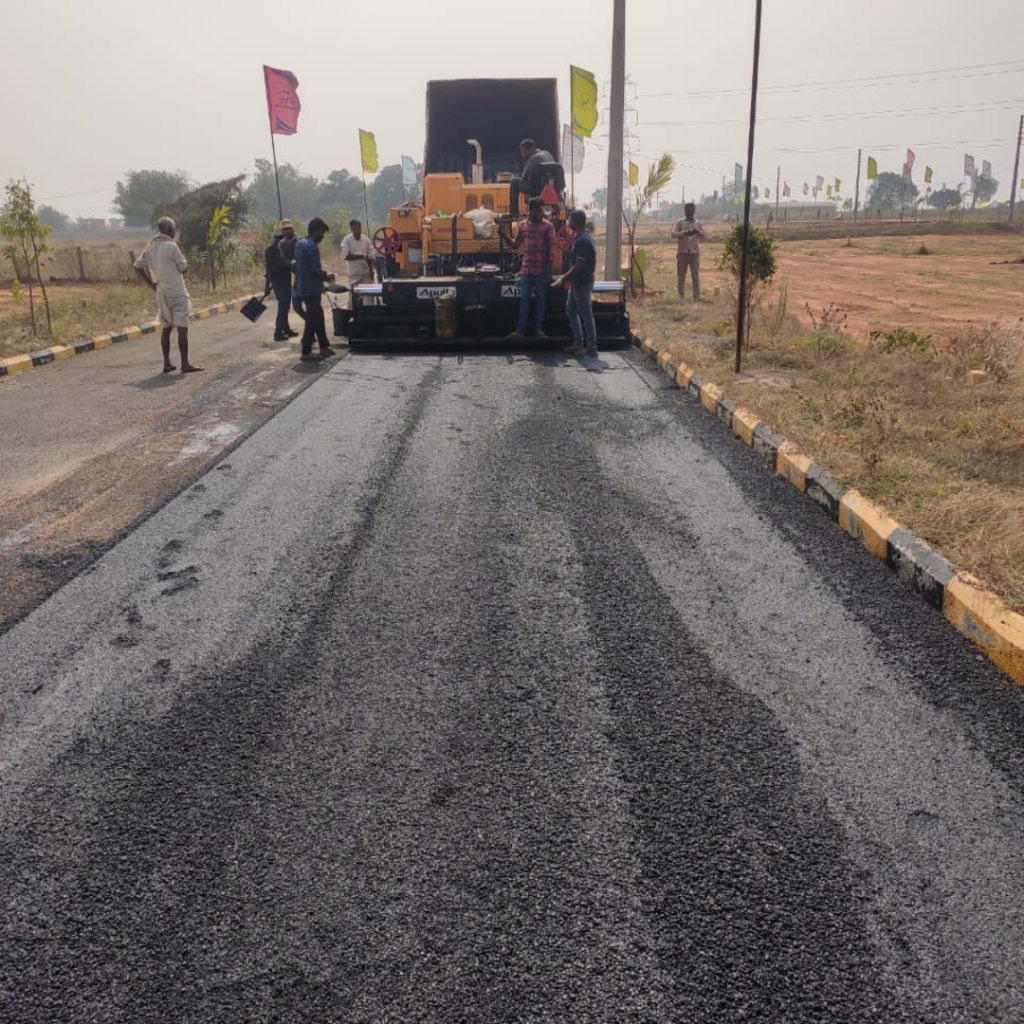BT ROAD
DAMBER ROAD
Asphalt road laying, also known as road construction or road paving, is the process of building or repairing roads using asphalt or bitumen as the primary construction material. Here are the key steps involved in asphalt road laying:
In typical hot mix asphalt (HMA) used for road construction, bitumen (also known as asphalt binder or asphalt cement) typically makes up about 4% to 5% of the total mix by weight. The majority of the mix consists of aggregates, such as crushed stone, sand, and gravel, which can vary in size and composition based on the desired properties of the road surface.
LAYING ON WMM
Site Preparation: The first step is to prepare the site where the road will be built or repaired. This involves clearing the area of vegetation, rocks, and debris. The road alignment and grade are also established during this phase.
Subgrade Preparation: The subgrade is the natural soil or compacted earth on which the road will be built. It needs to be properly prepared to provide a stable foundation for the road. This may involve excavation, compaction, and grading.
Base Course Installation: Depending on the road’s design and intended use, a base course may be installed on top of the prepared subgrade. The base course typically consists of crushed stone, gravel, or other suitable materials. It provides additional stability and drainage.
Asphalt Mix Production: Asphalt mix, also known as hot mix asphalt (HMA), is prepared in an asphalt plant. It is composed of aggregates (such as crushed stone or sand) and asphalt binder (bitumen). The mix is heated and combined in precise proportions to create a homogeneous material.
Asphalt Paving: The hot asphalt mix is transported to the construction site and spread over the prepared base course using specialized equipment, such as pavers. The paving machine ensures that the asphalt is laid at the correct thickness and compaction is achieved.
Compaction: Immediately after asphalt placement, heavy rollers are used to compact the asphalt mix. This compaction process ensures that the road is dense, smooth, and durable. It also eliminates air voids within the asphalt.
Surface Finishing: After compaction, the road surface may be finished with additional treatments, such as the application of a seal coat or surface texturing for improved skid resistance.
Curing and Cooling: The newly laid asphalt must cool and cure, which may take several hours or even days, depending on environmental conditions and the type of asphalt used.
Marking and Signage: Once the asphalt has cured, road markings, lane lines, and traffic signs are applied to ensure safe and organized traffic flow.
Proper road construction practices are essential to ensure the longevity and safety of the road. Asphalt road laying is a complex process that requires expertise in engineering, materials science, and construction techniques.

